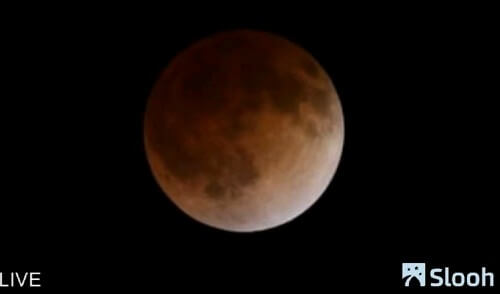For NASA, the eclipse caused another concern. They had to ensure that the LRO and LADEE spacecraft orbiting the moon would survive the long shadow period during the eclipse.

While the sun rose in Israel and in many parts of Europe and Africa, viewers in the US (except those who suffered from heavy clouds on the East Coast) enjoyed a total lunar eclipse, the first since December 10, 2011. A total eclipse and the reason for this lies in the absorption of light by the Earth's atmosphere, exactly the same absorption that causes sunrises and sunsets to be red). What is special this time is its proximity to a relatively close transit of Mars and the Earth, and a great proximity from our point of view between the Moon and Mars in the night sky.
The total phase of the eclipse lasted one hour and 18 minutes, about 29 minutes less than the theoretical maximum, which we came closest to on January 21, 2000. The record is also not expected to be broken until the eclipse of July 27, 2018. The reason for this is that the eclipse took place in a combination of the relative proximity of the moon to the earth.
The next white eclipses will occur on October 8, 2014, April 4, and September 28, 2015. Unfortunately, both these eclipses and the total eclipse that will follow them on January 31, 2018 will not be visible, or at least not fully visible from Israel. The next eclipse that will be visible from our area will occur on July 27, 2018.
For NASA, the eclipse caused another concern. They had to ensure that the Lunar Reconnaissance Orbiter orbiting the moon would survive the long shadow period during the eclipse. LRO uses solar panels to charge its batteries, and two passes through Earth's shadow will mean that it will not be exposed to sunlight at all for long hours. "The spacecraft moved from the shadow of the moon to the shadow of the earth," said Noah Petro, deputy chief scientist for the LRO project at NASA's Goddard Space Center. "Therefore, we took measures to ensure that everything would be in order and turned on instruments as well as monitored the spacecraft during the hours when it would be in line of sight with Earth."
Turning off the devices is designed to prevent power consumption that will drain the batteries. After the eclipse, the batteries began to charge gradually. In fact, NASA gave up the use of its powerful instrument to observe the phenomena associated with the eclipse.
NASA also took care of the safety of another lunar probe, the Lady Lunar Atmosphere and Dust Environment Explorer (LADEE) and tweeted on Twitter that she was in good condition after the eclipse.
NASA's explanation regarding the need to take precautions in operating the LRO spacecraft during the eclipse
Full broadcast of the eclipse on the SLOOTH website
see also: Mars in contrast - this week it is at the closest point to the Earth (relatively, of course)

3 תגובות
War is coming
The eclipse of September 2015 will be mostly visible from Israel